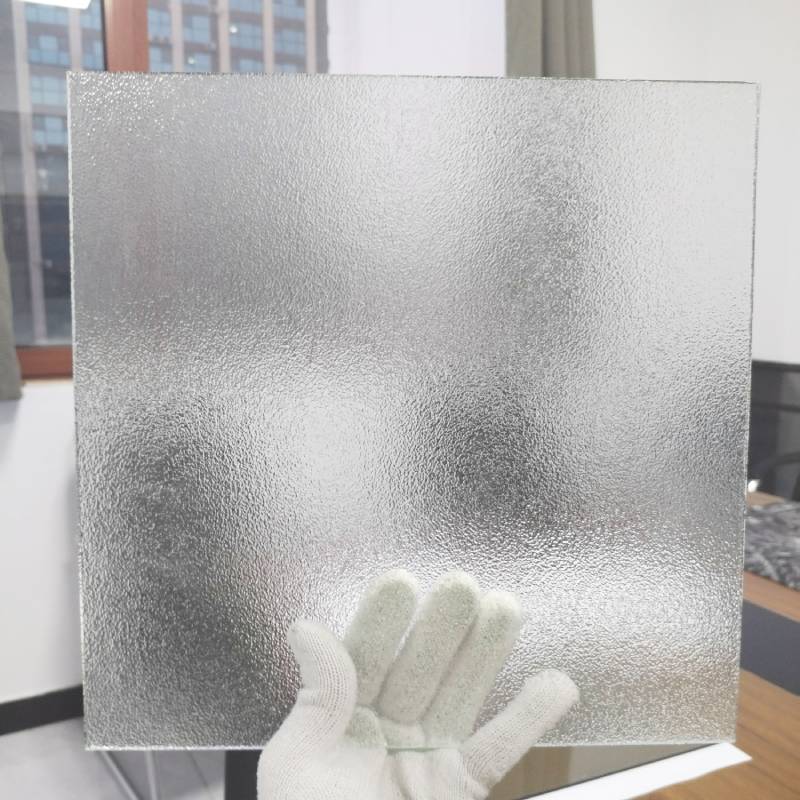Understanding the Pricing of 4mm Clear Float Glass
Float glass, known for its excellent optical clarity and smooth finish, has become a staple in the construction and manufacturing industries. One specific type, 4mm clear float glass, has garnered attention due to its versatility and wide-ranging applications. This article delves into the pricing dynamics of 4mm clear float glass, exploring the factors that influence its cost, its applications, and its market trends.
What is 4mm Clear Float Glass?
Float glass is produced by floating molten glass on top of molten tin. This unique process allows for a uniform thickness and a clear appearance, thus earning the term float. The 4mm thickness is particularly standard for many applications, striking a balance between strength and weight. This type of glass is widely used in residential and commercial buildings for windows, doors, and partitions, as well as in furniture design, mirrors, and displays.
Factors Impacting the Price
Several factors contribute to the pricing of 4mm clear float glass
. Understanding these can provide insights into market fluctuations and pricing variations.
1. Material Cost The primary ingredients used in glass manufacturing—silica sand, sodium carbonate, and limestone—constitute a significant portion of production costs. Changes in the price of these raw materials directly affect the pricing of glass products.
2. Production and Processing Costs The manufacturing process of float glass requires sophisticated technology and equipment. Additionally, there are costs associated with labor, energy, and maintenance of machinery. Any increase in these operational costs can lead to higher prices for the final product.
3. Market Demand and Supply The demand for 4mm clear float glass is influenced by the construction industry, which can be cyclical. During economic booms, the demand for construction materials—including glass—typically increases, potentially driving up prices. Conversely, during downturns, the demand may decrease, leading to price reductions.
4mm clear float glass price
4. Transportation and Logistics The cost of transporting glass also impacts its pricing. Float glass, especially in larger sheets, can be cumbersome and expensive to transport. Factors such as fuel prices, shipping rates, and delivery logistics all play a critical role in determining the final price.
5. Regional Variations Prices for 4mm clear float glass can vary significantly by region. Local demand, the availability of raw materials, and competition among suppliers can all lead to price discrepancies from one market to another.
6. Regulatory and Environmental Factors Compliance with environmental regulations related to glass production—such as emissions standards—can introduce additional costs for manufacturers. These costs are often passed down to consumers, thereby influencing the market price.
Current Market Trends
In recent years, the market for glass products has seen significant changes, particularly with the growing emphasis on energy efficiency and sustainable practices. The demand for glass that enhances energy performance in buildings is increasing, leading to a rise in interest in coated and insulated glass. However, 4mm clear float glass remains popular due to its affordability and adaptability.
Another trend influencing pricing is the globalization of the glass market. Import and export dynamics can affect local prices, with fluctuations due to international trade regulations and tariffs. Manufacturers may also adapt their pricing strategies based on competition from overseas suppliers, which can introduce lower-cost options for consumers.
Conclusion
The pricing of 4mm clear float glass is influenced by a combination of material costs, production expenses, market demand, and regional pricing strategies. As markets evolve and new demands emerge—particularly for energy-efficient and sustainable glass solutions—the dynamics of this sector will continue to change. For consumers, understanding these pricing factors not only helps in making informed purchasing decisions but also in predicting potential price trends in the future.
In essence, while the price of 4mm clear float glass may fluctuate due to various external and internal factors, its importance in construction and design remains steadfast. As innovation continues to shape the glass industry, it will be interesting to observe how pricing strategies and product offerings adapt to meet the ever-changing market demands.
 Afrikaans
Afrikaans  Albanian
Albanian  Amharic
Amharic  Arabic
Arabic  Armenian
Armenian  Azerbaijani
Azerbaijani  Basque
Basque  Belarusian
Belarusian  Bengali
Bengali  Bosnian
Bosnian  Bulgarian
Bulgarian  Catalan
Catalan  Cebuano
Cebuano  Corsican
Corsican  Croatian
Croatian  Czech
Czech  Danish
Danish  Dutch
Dutch  English
English  Esperanto
Esperanto  Estonian
Estonian  Finnish
Finnish  French
French  Frisian
Frisian  Galician
Galician  Georgian
Georgian  German
German  Greek
Greek  Gujarati
Gujarati  Haitian Creole
Haitian Creole  hausa
hausa  hawaiian
hawaiian  Hebrew
Hebrew  Hindi
Hindi  Miao
Miao  Hungarian
Hungarian  Icelandic
Icelandic  igbo
igbo  Indonesian
Indonesian  irish
irish  Italian
Italian  Japanese
Japanese  Javanese
Javanese  Kannada
Kannada  kazakh
kazakh  Khmer
Khmer  Rwandese
Rwandese  Korean
Korean  Kurdish
Kurdish  Kyrgyz
Kyrgyz  Lao
Lao  Latin
Latin  Latvian
Latvian  Lithuanian
Lithuanian  Luxembourgish
Luxembourgish  Macedonian
Macedonian  Malgashi
Malgashi  Malay
Malay  Malayalam
Malayalam  Maltese
Maltese  Maori
Maori  Marathi
Marathi  Mongolian
Mongolian  Myanmar
Myanmar  Nepali
Nepali  Norwegian
Norwegian  Norwegian
Norwegian  Occitan
Occitan  Pashto
Pashto  Persian
Persian  Polish
Polish  Portuguese
Portuguese  Punjabi
Punjabi  Romanian
Romanian  Russian
Russian  Samoan
Samoan  Scottish Gaelic
Scottish Gaelic  Serbian
Serbian  Sesotho
Sesotho  Shona
Shona  Sindhi
Sindhi  Sinhala
Sinhala  Slovak
Slovak  Slovenian
Slovenian  Somali
Somali  Spanish
Spanish  Sundanese
Sundanese  Swahili
Swahili  Swedish
Swedish  Tagalog
Tagalog  Tajik
Tajik  Tamil
Tamil  Tatar
Tatar  Telugu
Telugu  Thai
Thai  Turkish
Turkish  Turkmen
Turkmen  Ukrainian
Ukrainian  Urdu
Urdu  Uighur
Uighur  Uzbek
Uzbek  Vietnamese
Vietnamese  Welsh
Welsh  Bantu
Bantu  Yiddish
Yiddish  Yoruba
Yoruba  Zulu
Zulu 

